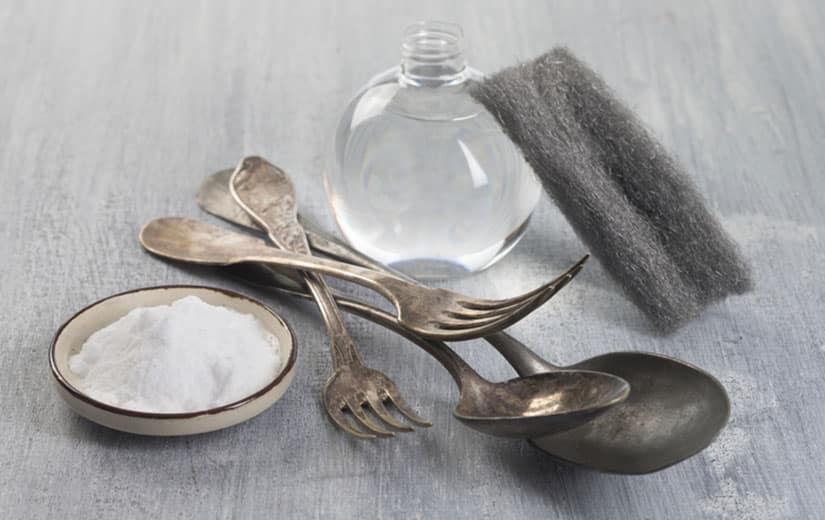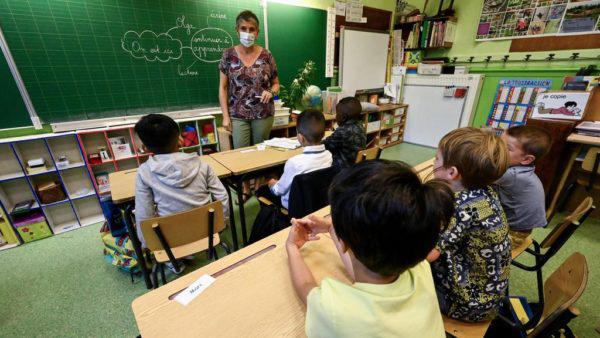
FiguresSource: Iri
Very select, the PGC billionaire markets club grew in 2020 with the arrival of four new members for a total now of 25 "elected". “Oils, minced meat, fresh cream and roasted coffee have crossed the symbolic threshold of one billion euros under the effect of the health context, thanks to the boom in homemade products, the multiplication of meals at home and the the rise of telework", comments Emily Mayer, business insight director at Iri France. Effects that have also played on the good overall vitality of our billionaires. According to Iri data in CAM as of January 3, 2021, all channels, the 25 recorded an average growth of 7.6% (versus 6.9% for all PGCs) for a turnover of 38.26 billion euros, or 33% of the total of the FMCG sector (116 billion).
Three double billionaires
All billionaires are thus on the rise, with the exception of fruit juices, at -0.4%, neglected for several years, in particular because of the sugar they contain, and plain waters, at -0.3 %, victims of plastic bashing. The prize goes to specialty beers, which have been asserting themselves for several years now, and even more in 2020, like the PGC phenomenon and peak at + 17.4% to approach 2 billion euros. “Specialty beers, like cooked pressed cheeses and lagers, could very soon enter the circle of double billionaires,” says Emily Mayer. To date, only three markets exceed this symbolic threshold: milk and yogurts, which have both regained unparalleled vigor thanks to the health crisis, and whiskeys, still in pole position, and by far. The year 2020 was however under the sign of a roller coaster for whiskeys, which posted a decline of 4% during the first confinement, before a jump of 20% during the deconfinement (from May 11 to 31), then an increase of 7.6% from June to the end of October and finally a growth of 8.4% over the three weeks before Christmas, according to Iri data. Driven by the innovations that fuel its value, whiskeys should not be dethroned anytime soon.
What could change in 2021? “Given the still uncertain context, it is very difficult to know, for example, if the new entrants will maintain their position or if there will be new categories in this list. What is probable, on the other hand, is that the elements which strongly supported the markets in 2020 will undoubtedly be a little less present in 2021, when life will have resumed a more normal course, ”concludes Emily Mayer.
What you must remember1. Whiskeys comfortably installed in pole position Whiskeys, stars of spirits, in the first place of the billionaire markets! And for good reason. The price of each bottle is high and it keeps going up. Hence a 4.4% increase in sales at Iri's last count. Thanks to the Japanese whiskeys that the French love. Thanks also to the regional whiskeys – from Brittany, Alsace, Burgundy – which arouse the curiosity of connoisseurs. And Scottish whiskeys – the bulk of the ttt market – are not left out. The fashion of the moment? Aging your elixirs in bourbon barrels, such as Label 5 Single Grain Bourbon Barrel (La Martiniquaise) or Ballantine's Bourbon Finish (Pernod Ricard). This gives them a vanilla side, like the American Jack Daniel's, very popular with young adults. S.Leb.2. Yogurts return to growth in volumeWith sales of nearly 2.3 billion euros, up 4.9% in value and 3.8% in volume, the yogurt segment ranks second billionaire markets in 2020. This performance is mainly linked to the health crisis because the results, in recent years, have not been there. Consumers have indeed flocked to accessible and family offers. The references that turned the most during the period of the first confinement concern above all everyday products, indicated an industrialist last spring. Another positive aspect: the valuation of the market, coupled with the increase in volume sales. CH3. Renewed interest in milkMilk is emerging from its negative spiral. After years of falling consumption, growth resumed with sales up 6% in value and 5.4% in volume. According to some industrialists in the sector, the raging anti-milk discourse has been erased by changes in habits. With the health crisis, breakfasts and meals eaten at home have naturally been more frequent and there has been a storage effect. In addition, the valuation was supported by premium segments such as specific milks (organic, lactose-free, etc.) but also by the end of promotions in the face of the risk of shortage. In addition, the drive channel, very dynamic since the beginning of the crisis, has strongly boosted sales. CH4. Pressed cheeses cooked at sustained ratesCheese, and cooked pressed cheeses in particular, have been on the rise for a long time. But the health crisis has accentuated this phenomenon, with double-digit increases in both value and volume. Certain categories “benefited” more from the period, in particular grated cheeses, widely used in cooking. In addition, manufacturers have been able to innovate for several years to respond to new trends with products for cooking, snacking or nomadism. Solutions that have been acclaimed in recent months. CH5. Specialty beers, THE phenomenon of PGCC, is much more than a hit! This is THE phenomenon of the moment in PGC: specialty beers – a segment that covers foams such as Leffe (AB InBev), Grimbergen (Kronenbourg), Affligem (Heineken) but also the entire offer of the beer cellar, the place where single bottles and cans are sold – all the successes. They are undoubtedly the category of alcoholic beverages that has benefited the most from confinement. Mean by this that consumers have massively postponed purchases of these beers from bars to supermarkets. The double-digit growth, both in value (+17.4%) and in volume (+15.6%) bears witness to this. Note that specialty beers are now the leading segment of the category, ahead of lagers. S.Leb.6. Special lagers don't count for plumsLagers, the second largest segment of the huge beer category in terms of turnover after specialty beers, have recently been revived by Bud, the American brand launched with big resources by AB InBev France. But next to Bud, the blondes are also “sure value” brands in the department, such as 1664 (Kronenbourg) and Heineken. Foams with which the consumer is never mistaken if he invites friends to watch a rugby or football match... 2021 should therefore still be favorable to packs since the Euro football championship is being prepared which, postponed by a year, should take place in June. A competition that always makes the beer flow. S.Leb.7. Natural flat water victims of plastic bashingFlat water? They are great victims of the pandemic, which has led to the closure of bars and restaurants. In view of the results recorded by this department (-0.3% in value, +1.7% in volume), consumers hardly transferred their out-of-home purchases to supermarkets. And it was mainly the private labels who toasted. National and regional brands fared better, in particular because they communicated a lot about the use of recycled PET in the manufacture of their bottles. An axis chosen to limit the damage of plastic bashing, a movement of reaction to the plastic microparticles that pollute the oceans. This sector is one of those very singled out… even though plastic is everywhere. S.Leb.8. Butter back in the hearts of the French Long pointed out for being too greasy, butter has returned to the hearts of the French. After many years of decline, this market is now buoyant again with more than 1.6 billion euros in turnover in 2020 (+?8.3% in value and +?8.8% in volume). During the first period of confinement, sales even flirted with growth of around 25%. To continue to take advantage of this enthusiasm, manufacturers are implementing merchandising approaches, such as Paysan breton (Laïta) or Lactalis, which has tackled the small creamery. CH9. Compatible capsules, champions of coffee podsIn a very dynamic total market for coffee pods, due to an increase in home consumption due to the boom in teleworking, the segment of Nespresso compatible capsules grew by 23%, i.e. 84 million euros in earnings in 2020. JDE has won a market share of 53.5%, mainly achieved with its L'Or brand, which generates 287 million euros on capsules, ahead of Carte Noire ( 12.1% of the market), Starbucks (7.6%) or Café Royal (4.4%). Soft pods also returned to growth of 2.8%, led by Senseo (JDE) which holds 53% of the market and weighs 292 million euros (+5.1%), ahead of Carte Noire, the second national brand ( 17.7% market share) then Legal (2.2%) and a myriad of other brands. S.Lav.10. Unheard of since 2016 for cooked ham This is unheard of since 2016 for cooked ham, which has returned to growth for the first time in four years. It posted a turnover of 1.58 billion euros, up 8.6%. Its sales in volume increased over the same period by 1.9%. Good performances which are explained by a transfer of meals to the home during the first half of 2020, marked by twelve weeks of confinement. Since then, sales have not shown the same dynamism but continue to progress. Beyond the crisis that has benefited the category, manufacturers want to see in this development the reward for the efforts made in recent years in terms of reducing packaging and improving revenue. MC11. The comeback of fresh dessertsDesserts in the ultra-fresh department have taken on new colors. Long on a downward trend, the category is returning to growth, both in value and in volume (respectively + 4% and + 4.3%) with a turnover of 1.57 billion euros. It is not surprising that, during the year 2020, consumers wanted to indulge themselves with accessible indulgence. In addition, most manufacturers had to postpone their innovations, which arrived massively from May-June, thus strongly boosting the market, like the skyrs for example. It remains to be seen whether this comeback of fresh desserts will last.ch12. Fruit juices eliminate sugar Fruit juice remains the drink that accompanies breakfast. A widely shared moment, which makes this category as huge as colas and still waters. But, in recent years, she has been attacked because of her sugar levels. Joker (Eckes-Granini France) is therefore betting on the Les Bien Faits range, 30% less sweet than an equivalent classic juice. Incidentally, the brand can display a B note on the Nutri-score, an honorable result since most juices are classified C, or even D. Cidou, brand of Laiterie Saint-Denis-de-l'Hôtel (LSDH), makes the same with the Les Désucrés range. The future of fruit juices will therefore depend in part on a reduced sugar level. s. leb.13. Eggs in the spotlightBetween eggs and the French, it's a story that lasts. The cheapest animal protein on the market has been able to enhance its segment for several years, in the alternative (Label Rouge, organic, free range) and animal welfare, in order to meet expectations. In addition, manufacturers are implementing tools to guarantee the traceability of products. Alongside the French craze for eggs, the Covid crisis has given a new boost to sales with meals taken at home and the return of homemade. Sales are up by nearly 10% in volume, versus 2% before the health crisis, and by more than 11% in value (versus 5% in 2019).ch14. Resilient colasThose who would have liked to bury the colas are at their expense. They adapted remarkably well to the crisis, which is reflected in growth (+3% in value, +3.8% in volume) that this important segment had not recorded for several years. Starting with the arch-leader Coca-Cola, which notably strengthened its offer in glass bottles, this material enhancing the content. The two leaders, Coca-Cola and Pepsi, have pushed their sugar-free versions, a major trend in pleasure drinks. These have largely contributed to the growth of the non-alcoholic beverage category. We should also note the good health of regional colas, such as Breizh Cola, and the launch of Coq Cola by the Ogeu group. Proof that cola has a bright future ahead of it. S.Leb.15. General detergents underperformIn 2020, sales of general detergents remained stable in value (+0.2%). This performance is much lower than that of the maintenance department as a whole (+8.5%). If the French have cleaned their house more, they have on the other hand done less laundry. The generalization of telework is no stranger to this. During the first confinement, according to Kantar, 46% of them dressed casually, with a return to jogging. 12% even said they tended to stay in their pajamas… Children also had fewer opportunities to get dirty. Detergents, however, remain the largest category in the cleaning department and the only one to exceed one billion euros in turnover. MB16. Processed poultry products are on the riseWith growth of 12.9% in value, processed poultry products (1.4 billion turnover) are among the lucky winners of the Covid crisis. Breaded and nuggets have, during the period of the first confinement, tumbled onto the plates of families in need of inspiration for repeated meals. The good health of the category is therefore partly due to the crisis, but not only. Efforts by manufacturers to reduce salt and fat, to favor a French origin and the tenderloin are beginning to bear fruit. The variety of the offer, the formats and the seasonings certainly made the difference. Not to mention the brand promotion work. With Yannick Bestaven, big winner of the Vendée Globe 2020-2021, Maître Coq enjoyed a great exhibition! MC17. Chocolate bars bring comfortChocolate bars have benefited from the crisis. This growth is explained by the increase in purchases for snacks, by the development of do-it-yourself and the propensity of the French to bake during confinement. Family bars, a segment that saw the arrival of the first M&M's bars in 2020, and baking chocolate accounted for 60% of market gains over this period. With good performance for the organic segment (8% of tablets, at 106 million euros). The flagship brands have played their role as a safe haven, in particular Mondelez, the leader in chocolate bars with 24.5% market share in value, including 11.3% for Milka and 12.5% for Côte d'Or. S.Lav.18. Toilet paper, star of the first confinementThe images of consumers around the world rushing to toilet paper will remain in everyone's mind. The fear of missing out led the French to rob the shelves. According to Iri, during the first week of confinement (from March 16 to 21, 2020), toilet paper was the category, all PGCs combined, where the ruptures were the most numerous, and the second category in hypermarkets after pasta. 30% of items were not available that week in supermarkets (27% in hypermarkets), ie seven times more than in February. Even though sales subsequently returned to normal, the toilet paper market still grew by 4.5% in value and 5.3% in volume over the year as a whole. MB19. Chocolate confectionery on the right trackChocolate confectionery is the only confectionery segment that performed well during the crisis. With a promotion of the category, carried by strong brands like Kinder (Ferrero), Kit Kat or Smarties (Nestlé). After highlighting chocolate and the natural origin of the colors of its sweets, Smarties has adopted paper and cardboard packaging. This segment is also not immune to chocolate producers' commitments to sustainability. So, last year, Toblerone was integrated into Mondelez's Cocoa Life program. An approach in which its brands Milka, Côte d'Or and Daim are already committed in France. S.Lav.20. The return of anise-flavoured aperitifs2020 was the year of sure bets, in terms of brands and tastes. This is how the aniseed market, dominated by Ricard, achieved remarkable performances, the likes of which it had not seen for a long time. As with many beverage categories, the closure of the CHD has in fact led to a shift in sales to supermarkets. Moreover, it is not innovations that have pulled this market. And for good reason, there were few. Ricard did try to launch Ricard Plantes frais but its sales remain dwarfed. The brand is also trying organic but, for the moment, only at wine merchants. No, the category won sales with its great classics: Ricard, 51, Duval… S. Leb.21. A crazy year for oilsNews in this club of billionaires, oils have had a year of crazy growth. With very good performances for olive oils, but also for the organic segment, which now represents a quarter of sales, with growth of more than 20% last year. At Tramier, 47% of the 1.3 million consumers recruited were for extra virgin olive oil. Puget (Lesieur) is relaunching itself with its new Les Récoltes range. The location is another very important aspect. Lesieur aims to source French origin seeds for 100% of its dedicated production of oils and condiments. 50% of French seeds will come from partnerships between Lesieur and French farmers guaranteeing traceability down to the plot. Since 2020, Lesieur oils (Fleur de Colza, Coeur de Tournesol and Frial) have been produced exclusively from seeds grown in France, from sustainable agriculture and the Terres OléoPro sector. S.Lav.22. Minced meat passes a symbolic milestoneA great first for minced meat! For the first time, the category enters the ranking of billionaire markets thanks to a boom in its turnover of 13.9%, to 1.085 billion euros. As a family gathering offer, the market benefited during confinement from a transfer of consumption from the out-of-home catering circuit to the home. This development is reflected in products made from beef, which represent more than 50% of the volumes of beef consumed in France. A situation that is not without causing problems for the industry, which is finding it increasingly difficult to establish a balance of materials. In this context, manufacturers are trying to promote the category by developing offers with clearly stated quality promises (Label Rouge, grass, etc.). MC23. Industrial pastries driven by organicIn growth at the start of 2020, pastries lost ground with the first confinement, a victim of homemade. The category then struggled to recover. “The segment is almost slack if we remove the good progress of the drive circuit and proximity during confinement”, specifies Émilie Germain-Péau, marketing and communication director of La Fournée Dorée. The mainstays such as sliced brioche, which weighs 25% of the market, milk breads or snacks are in decline. The leaders saw their sales shrink, like Pasquier, number one with 27.7% market share in value, and Harrys (12.6% market share). Only La Boulangère (4.2% market share) grew by 3.7%, thanks to organic, a segment that outperformed during the crisis. S.Lav.24. Fresh cream, a response to the need for indulgenceIn the family of billionaire markets, a new arrival, fresh cream. This segment owes its performance in large part to the Covid crisis. Indeed, consumers having taken all of their meals at home, they have (re)started in the kitchen. And the results are breathtaking: growth in value of 13%, to 1 billion euros in turnover and 12% in volume when, last year, the category grew by 4.7% in value and fell by 0.4% by volume. Moreover, to stick to the expectations of naturalness, manufacturers have innovated in organic, as for the other ultra-fresh segments.c. h25. Roasted coffee boosted by the grainRoasted coffee (ground + grain) was driven by the grain (+46% to €180 million), which jumped 42% in 2020, boosted by the development of automatic machines, now much more affordable. “In addition to the economic side and the taste, there is also the ecological aspect with the absence of capsule waste”, underlines Luc Crombez, marketing manager of Méo, which saw its sales in grains (32% of its business) up 43% last year. Ground, on the other hand, saw some of its buyers go for grain and portioned. Dominated by Carte Noire (30.6% market share), the ground was also penalized by the drop in promotions following the Egalim law. S. Lava.
![[Dossier] A golden year for billionaire markets [Dossier] Une année en or pour les marchés milliardaires](https://website-google-hk.oss-cn-hongkong.aliyuncs.com/drawing/article_results_6/2022/2/27/97d4e4e1edbba9180d2f8e18d289f8b1.jpeg)







